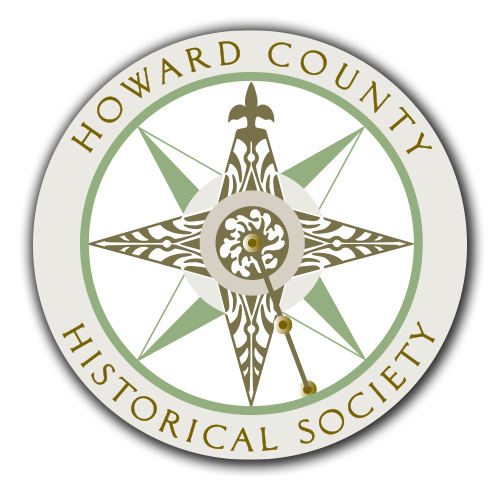HOWARD COUNTY IN THE CIVIL WAR
Political Sentiment During the Early Civil War
By Gerald W. Ueckermann, Jr.
The Union Party of Maryland was formed at a convention that was held in Baltimore on May 23, 1861. Howard County was represented at the convention by James A. Gary, whose family owned the Alberton cotton mill, and Thomas J. Hood. The party adopted a platform that condemned secession, supported the Lincoln administration’s efforts to put down the rebellion, and insisted that slavery be left alone. Since the goal of President Lincoln early in the war was to suppress the rebellion, not to end slavery, the positions of the administration and Maryland Unionists were generally compatible. The Union Party’s opponents included secessionists who wanted Maryland to join the Confederacy and Peace Democrats who wanted the Southern states to be permitted to secede and the war ended.
The first test of political sentiment in Howard County came with the June 13, 1861 special election for the U.S. House of Representatives. Howard County was then in Maryland’s Sixth District, which included all of the western shore counties south of the Patapsco, plus some areas of Baltimore County. The Sixth District contest between Unionist Charles B. Calvert and State Rights candidate Benjamin G. Harris presented a stark choice. Calvert, great-grandson of the fifth Lord Baltimore and one of Maryland’s largest slaveholders, declared himself in favor of the “Union, the Constitution and the enforcement of the laws”, a reference to laws protecting slavery. Harris contended that secession was legal, and that Maryland should join the Confederacy. Calvert won Howard County easily, garnering 69% of the vote and carrying every election district except the Fourth District, where the county’s tobacco production was centered. Overall, Calvert won a very close election with 51% of the vote, defeating Harris 2,730 votes to 2,628.
HOWARD COUNTY RESULTS FOR JUNE 1861 CONGRESSIONAL ELECTION
| Calvert (Union Party) | Harris
(State Rights Party) |
|
| First District | 310 (83%) | 65 (17%) |
| Second District | 239 (79%) | 62 (21%) |
| Third District | 92 (61%) | 58 (39%) |
| Fourth District | 88 (46%) | 105 (54%) |
| Fifth District | 134 (58%) | 99 (42%) |
| Total | 863 (69%) | 389 (31%) |
Thus, the first opportunity Howard County voters (all of whom were white males) had to express their sentiments at the ballot box resulted in a decisive victory for the Union Party.
A more important test of public sentiment was the election of November 1861 when a governor, delegates to the state General Assembly, and county officials were to be elected.
On August 27 the Howard County Union Party met and nominated candidates for the House of Delegates and for county offices. They joined the party’s gubernatorial candidate, conservative Unionist Augustus W. Bradford, on the Union ticket.
County Democrats regrouped and formed the Howard County Peace Party, which was composed of secessionists and Peace Democrats. The county Peace Party met on September 7 and nominated its own slate of candidates. The Peace Party also had the support of the county’s state legislative delegation consisting of Sen. John S. Watkins and Delegates John Brown and William Turner, all of whom had been elected as Democrats in 1859. Its ticket was ultimately headed by Benjamin C. Howard, the gubernatorial candidate of the Peace/State Rights parties.
Around this time, it was observed that there was great bitterness between groups in the county that far exceeded any seen before the war.
The Peace Party lost an ally in the fall of 1861 when Howard County’s only newspaper, the Patapsco Enterprise, appears to have closed. The Enterprise, which was published by John Schofield, had taken a decidedly pro-South stance since Lincoln’s election. Although the circumstances of its closure have not been determined, on August 19, a combative group of Union men went to Schofield’s house to confront him about an article that he published attacking the Lincoln administration. The men returned two days later and nailed a flag over the door of the house. Unionists also hoisted an American flag over the Enterprise’s office in Ellicott’s Mills, and Union forces were stationed to guard it. No mention has been found of the Enterprise after early October 1861. Howard County would not have another newspaper until after the war.
The November 1861 election produced another decisive Union Party victory in Howard County.
HOWARD COUNTY RESULTS FOR NOVEMBER 1861 GUBERNATORIAL ELECTION
| Bradford (Union Party) | Howard (Peace – State Rights Party) | Turnout vs 1860 | |
| First District | 340 (77%) | 102 (23%) | 111% |
| Second District | 250 (70%) | 107 (30%) | 100% |
| Third District | 122 (51%) | 118 (49%) | 114% |
| Fourth District | 134 (45%) | 165 (55%) | 101% |
| Fifth District | 153 (50%) | 152 (50%) | 106% |
| Total | 999 (61%) | 644 (39%) | 106% |
Bradford carried Howard County with 61% of the vote, and all the other Union Party candidates were victorious by similar margins. Those elected included Edward Hammond and Thomas Donaldson, both of whom were elected to the House of Delegates, and Commissioners Thomas H. Hood, William Hughes and William Rowles.
During the next county election in November 1863, the Union Party candidates would again sweep to victory, receiving about 59% of the vote.
It has been said that Howard County was pro-South during the Civil War. While the election returns indicate that this claim may be true for some areas of the county, overall the county was decidedly pro-Union. The Union Party carried every county election held during the war until November of 1864 when the Unionists had been harmed by internal divisions.

Recent Comments